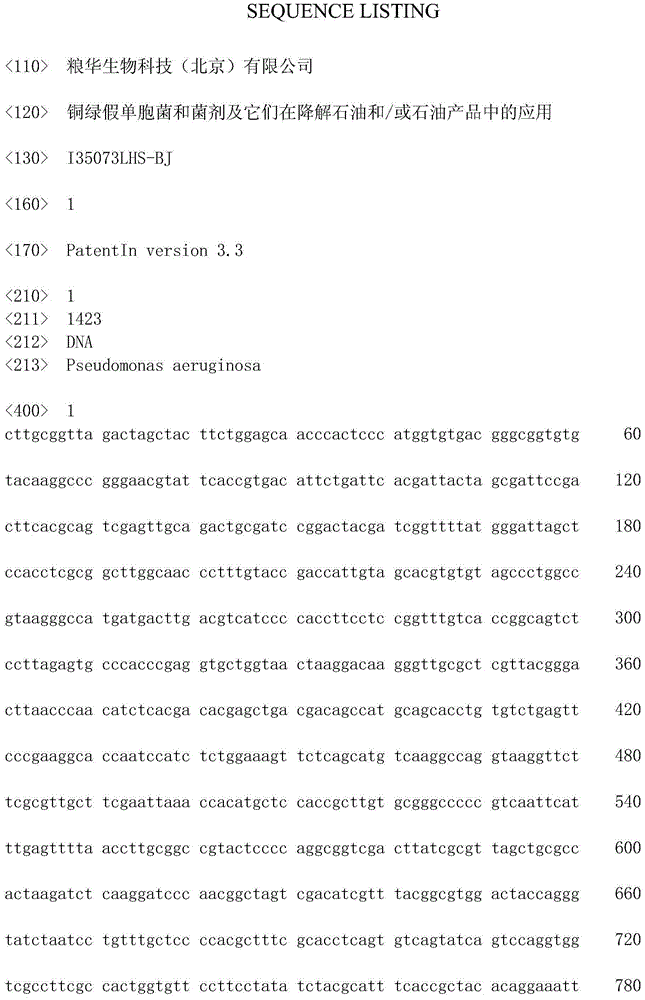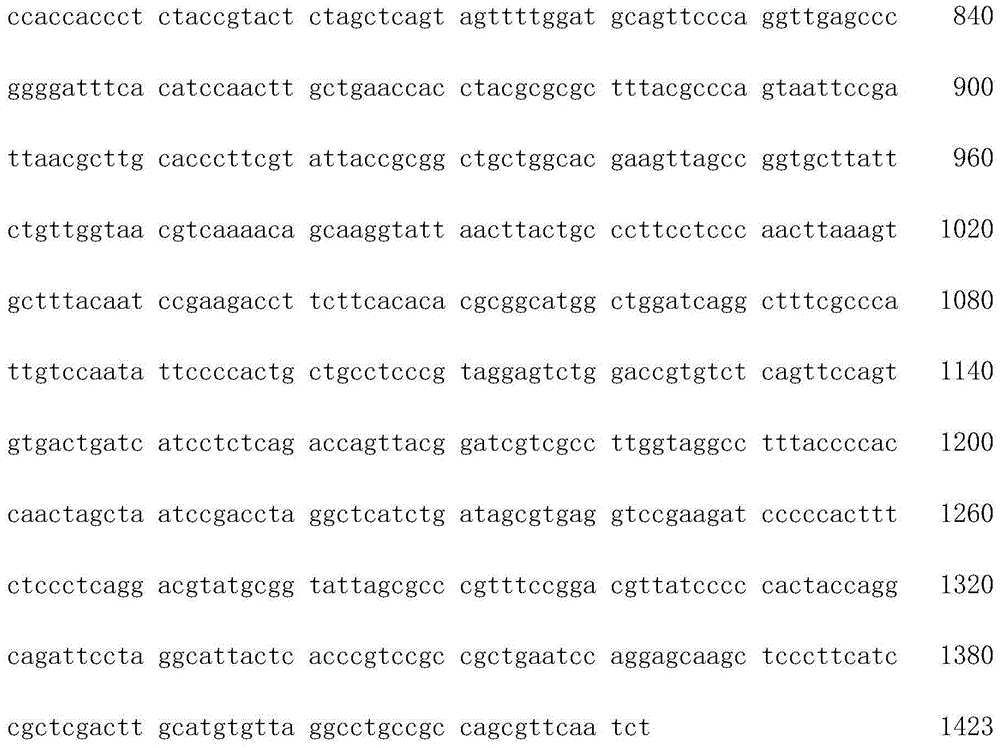Pseudomonas aeruginosa, fungicide and application of pseudomonas aeruginosa and fungicide to degradation of petroleum and/or petroleum products
A technology of Pseudomonas aeruginosa and petroleum products, applied in the direction of application, plant products, bacteria, etc., to achieve the effect of large biomass, high tolerance, and fast growth speed
- Summary
- Abstract
- Description
- Claims
- Application Information
AI Technical Summary
Problems solved by technology
Method used
Image
Examples
Embodiment approach
[0052] According to a specific embodiment of the present invention, the inorganic salt is KH 2 PO 4 , K 2 HPO 4 , NH 4 NO 3 , MgSO 4 , CaCl 2 and FeSO 4 ·7H 2 O.
[0053] Wherein, the present invention has no special limitation on the amount of the inorganic salt added, which can be determined according to the type and content of the inorganic salt in the environment polluted by petroleum and / or petroleum products. For example, in KH 2 PO 4 (0.8-1.2%), K 2 HPO 4 (0.8-1.2%), NH 4 NO 3 (1-1.5%), MgSO 4 (0.03-0.08%), CaCl 2 (0.001-0.003%), FeSO 4 ·7H 2 O (0.01-0.03%) mixed inorganic salt solution is an example, based on per kilogram of the environment containing petroleum and / or petroleum product pollution, the addition amount of the above-mentioned inorganic salt mixed solution can be 1-3ml / day.
[0054] According to the present invention, when the environment containing petroleum and / or petroleum products is soil, in order to further promote the degradation e...
Embodiment 1
[0066] This example is used to illustrate the salt-tolerant characteristics of bacterial strain P9 provided by the present invention in petroleum-containing environment
[0067] In the triangular flask, add 50g of the original oil content of 1.5% by weight of the petroleum-contaminated soil sample, 200mL inorganic salt culture medium and some glass beads, in addition, add sodium chloride in the glass bottle at the same time, so that the concentration of sodium chloride is respectively 0, 3% by weight, 5% by weight, 7.5% by weight, 9% by weight, each salt concentration was repeated three times, and sterilized by moist heat at 121° C. for 15 minutes. It has been determined that 5% of petroleum hydrocarbons will be lost during the sterilization process.
[0068] The bacterial strain P9 of the present invention was inoculated in the Erlenmeyer flasks containing different sodium chloride concentrations above, and the inoculum size was 1.25 mL. Place each Erlenmeyer flask in a 30°C...
Embodiment 2
[0079] This example is used to illustrate the impact of different N forms on the degradation effect
[0080] Add petroleum substrate (concentration: 2000mg / L) and different N forms (NH 4 ) 2 SO 4 , (NH 2 ) 2 CO 3 、KNO 3 , NH 4 NO 3 Inorganic salt culture solution (the equimolar amount of nitrogen-containing inorganic salt in the original inorganic salt medium is replaced by the above-mentioned nitrogen-containing inorganic salt), adjust pH=9, inoculate 3% bacterial solution in the above-mentioned Erlenmeyer flask, at 30 ℃, 150r / min shaking culture for 7 days, then measure the TPH content, and calculate the removal rate; at the same time, a blank control experiment without bacterial solution was set up for each different N form treatment.
[0081] The results showed that adding (NH 2 ) 2 When CO nitrogen source is used, the degradation rate reaches 71%. Add NH 4 NO 3 When nitrogen source is used, the degradation rate reaches 60%. Add KNO 3 When nitrogen source is...
PUM
 Login to View More
Login to View More Abstract
Description
Claims
Application Information
 Login to View More
Login to View More - R&D
- Intellectual Property
- Life Sciences
- Materials
- Tech Scout
- Unparalleled Data Quality
- Higher Quality Content
- 60% Fewer Hallucinations
Browse by: Latest US Patents, China's latest patents, Technical Efficacy Thesaurus, Application Domain, Technology Topic, Popular Technical Reports.
© 2025 PatSnap. All rights reserved.Legal|Privacy policy|Modern Slavery Act Transparency Statement|Sitemap|About US| Contact US: help@patsnap.com



